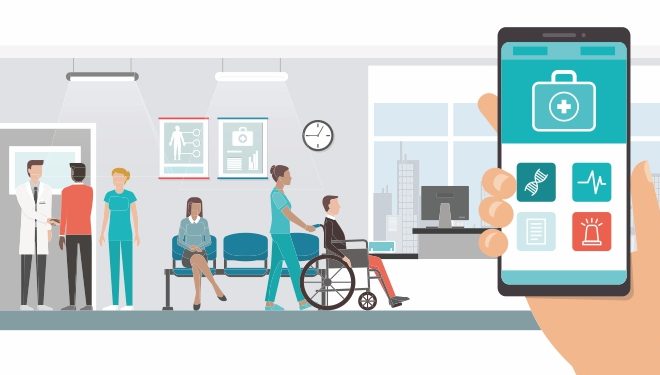Guidelines for Hospitals to Measure The ROI On Health IT Investments
The healthcare industry is moving towards a value-based care model that intersects with population-based care. Owing to this shift, health IT investments are climbing up the priority list for healthcare providers. Technology, after all, is the great enabler of efficiencies and profitability. While the importance of health IT has been established, there are too many times when hospitals struggle to justify the ROI of Health IT. It has also often been noticed that while these Health IT investments are made, these implementations do not reach a very successful conclusion since usually there is no stakeholder buy-in. The first step in ensuring the ROI of any project is to ensure usability and ensure that the solution addresses the main pain points of the organization. In the case of hospitals, the needs of the stakeholders of healthcare system, i.e., the doctors, nurses, caregivers, etc. have to be considered and the health IT solution should address their demands successfully. A doctor will hardly use a technology tool if it adds to his cognitive burden. Making health IT investments, thus, should not be a sole IT or administrative decision if hospitals want to realize the ROI of these investments.
The truth is that the ROI of health IT investments goes beyond looking at the amount of money saved or the money earned. Given that we are moving towards the consumerization of healthcare, when measuring the ROI of IT investments, hospitals have to look at assessing the impact of these investments in improving patient satisfaction levels, improvement of hospital efficiencies, the satisfaction of clinicians and the hospital staff, etc. Technology investments have to be such that they contribute to the improvements in operational and clinical qualities. Healthcare IT ROI has to take into consideration the qualitative benefits of these investments and the operational aspects since these two things are now interdependent.
Here’s a look at some guidelines that can help hospitals measure the true ROI on their health IT investments.
Improved processes and clinical workflows
Health IT investments contribute greatly to processes improvements. These investments help processes become more agile and adaptive and contribute greatly to improving the efficiencies of the hospital. With today’s technology, hospitals can not only improve record keeping of patients but also ensure that this data can be used for decision support, enable standardization of processes, and also the implementation of medical best practices. These factors contribute better health outcomes, reduced errors, and greater patient satisfaction, etc. – all of these contribute to the financial health of the hospitals.
Greater productivity and time saving
Health IT investments can help optimize resource utilization. Traditionally, hospitals have been depending on manual processes such as manual charting, managing paper records, managing bed counts, managing the usage of key resources such as operating room and imaging room, staff scheduling, medical information tracking, checking for availability of x-ray systems etc., or completing other associated hospital related tasks. However, with comprehensive health IT solutions, there can be a reduction of administrative time wastage. When the right information available in one place, physicians can optimally and productively utilize the time spent with each patient. This again goes to improve patient satisfaction levels and that has a direct impact on the hospital bottom line.
Lesser readmissions
Yes, health IT investments can help greatly in reducing re-admissions. With the help of technology, doctors can take better pre and post-operative care of their patients. They can leverage technology to streamline the exchange of clinical data such as health reports, investigation results etc. with invested stakeholders such as nurses, anesthetists, and other doctors involved in the surgery for better outcomes. Technology can also be used to triage alarms critical to patient safety that can inform caregivers if the patient shows any sign of distress. All this ensures that the patient has recovered completely before being discharged and leads to fewer readmissions – contributing to the overall ROI of health IT investments.
Greater patient safety
Health IT investments ensure greater patient safety. Studies have shown that the right technology can help doctors reduce prescription errors by almost 50%. Technologies such as oximetry and capnography ensure accurate monitoring of post-operative patients. EHRs contribute to streamlining communication between all stakeholders involved in a patient’s care by ensuring that all patient-related information is available in a centralized repository along with providing decision support through reminders and alerts. This can also be used in chronic disease management and care planning. By enabling greater patient safety, health IT investments automatically begin to contribute to the bottom line and eventually justify their costs.
Revenue cycle management
A report from McKinsey suggests that each year, almost “0.4% of hospital services go unbilled at a cost per bed of just over $4,000.” These billing errors can take place because of coding errors or even eligibility questions. The right health IT investments take into account the clinical management capabilities as well as office management capabilities and provide analytics insights, and also promote consistent naming, coding, and classification of treatments. These insights help hospitals in improving the revenue management of the hospital by optimizing the oversights of all procedures.
Health IT investments contribute directly to improving operational, clinical, financial and administrative capabilities of a hospital. These improvements have a direct impact on the patient satisfaction levels and also help in boosting staff productivity and engagement levels by reducing cognitive overload. Clearly, the realization of benefits for health IT investments stems from maximizing the potential of the hospital and the caregiving network.




